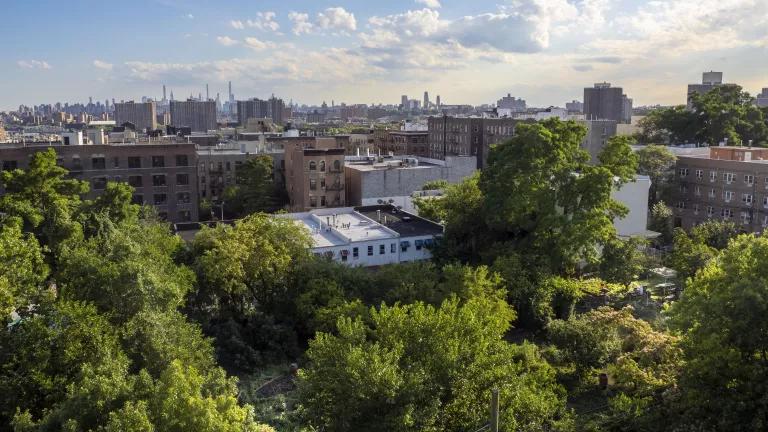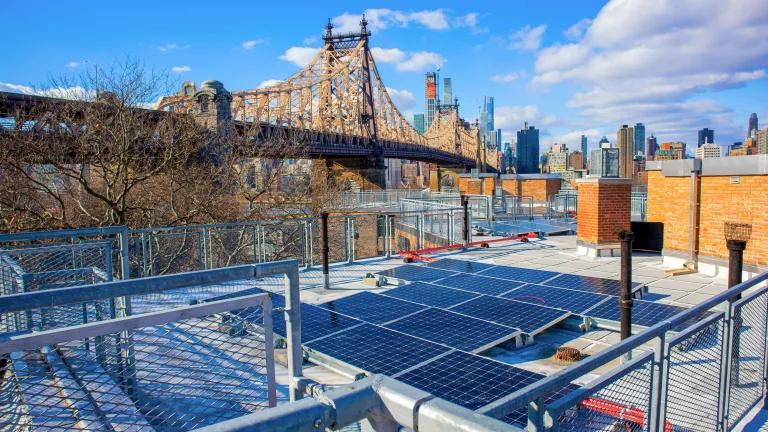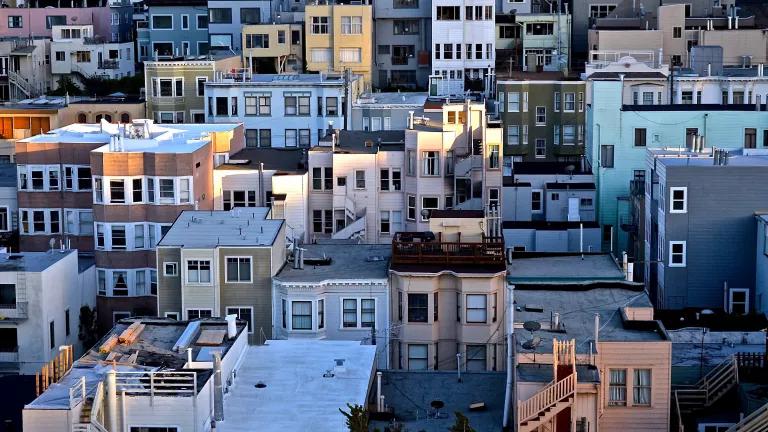Steps New York Must Take to Meet its Energy Efficiency Goals
NRDC, along with a coalition of environmental advocates and energy efficiency advocates, submitted comments urging the state to fill in the gaps needed to reach its efficiency target in an equitable and effective way.

Following up on Governor Cuomo’s ambitious energy efficiency targets announced on Earth Day, New York State has been hard at work. The New York State Energy Research & Development Authority (NYSERDA) and the Department of Public Service (DPS) have hosted two technical conferences and have released a report full of strategies to help New York meet its targets to achieve greater energy savings by 2025. NRDC, along with a coalition of environmental advocates and energy efficiency advocates, submitted comments urging the state to fill in the gaps needed to reach its efficiency target in an equitable and effective way.
Energy efficiency is absolutely essential for New York State to achieve its climate and clean energy goals. In addition, energy efficiency offers many benefits for New Yorkers, including savings on energy bills, local job creation and reduced air pollution. But as we’ve seen play out in other states, the level of energy efficiency that is ultimately delivered to customers depends directly on the state policies that are adopted and implemented. Creating policies that enable building owners and occupants to work with contractors, utilities, and energy efficiency companies on upgrades can create healthier and safer buildings. These policies can reduce energy bills for customers in the long term. (There are several ways to improve the energy efficiency of a building, including upgrading lighting, switching to cleaner and more efficient HVAC systems, and adding insulation. Smart policy adoption and execution will spur the market for these projects and ensure New York is on track to meet its goals.)
For the state’s commendable goals to be successfully implemented, agencies must provide key information in a timely and transparent manner. In our comments, we urge the state to:
1. Provide utilities with a clear timeline and guidelines for ramping up savings annually through 2025, starting in January 2019
Without urgent action, utilities will not have the clarity needed to implement the programs needed to achieve savings over the next six years. In addition to an ongoing regulatory process, the Public Service Commission should issue a “no regrets” order (or guidance document) that requires utilities to ramp up energy efficiency targets each year by an amount on par with the savings that utilities in leading states have achieved.
Additionally, funding for each of the strategies that was set forth in the Whitepaper should be outlined clearly. In particular, utilities must be guaranteed the ability to recover their costs for prudent efficiency investments, and the ability to make a return on those investments based on their performance in meeting their goals. This will be key in making sure that utilities have the right structure in place to play a leading role in scaling up the market for energy efficiency services as they set and achieve the energy saving goals needed to meet Governor Cuomo’s target.
2. Set a strong target and clear strategy for advancing the shift to cleaner sources of heating and cooling, including highly efficient electric heat pumps
As more electricity is generated from clean resources such as wind and solar, an important part of achieving New York’s goal to reduce carbon emissions 80 percent by 2050 will be encouraging “environmentally beneficial electrification,” which describes technologies, such as heat pumps, that contribute to reducing overall greenhouse gas emissions from buildings and transportation. Clean heating and cooling reduces the need to burn fossil fuels directly on site in buildings, and this reduces carbon emissions and air pollution.
So far, New York has only achieved a small portion of the potential to advance the adoption of heat pumps. While NYSERDA and several utilities have programs in place to incentivize heat pumps, a strong target with a defined funding plan will be needed to coordinate and optimize these efforts. A strong target will mobilize the commitment of sufficient resources to enable the market transformation that will be needed to achieve these targets at scale.
3. Serve as a leader on adopting strong building codes, building appliances, and benchmarking ordinances
Benchmarking, the practice of determining how much energy a building uses, gives it a score that allows the owner and utility serving the building to see how the building compares to others that are similar in size and type. This is helpful in giving building owners the information needed to understand how much energy their building uses, so they can start strategically finding ways to reduce energy use. Benchmarking is required by ordinance in at least 26 cities, including New York City, which requires commercial buildings larger than 10,000 square feet to disclose benchmarking data. We believe that at minimum, benchmarking should be required for all private buildings over 25,000 square feet, similar to what is observed in leading cities including Atlanta, Denver, Salt Lake City, and Denver, which all use 25,000 square feet as their bottom threshold. Best practices call for lower thresholds. Austin, Seattle, Portland, OR, and Portland, ME, all have lower thresholds, ranging from 10,000 to 20,000 square feet. For the state to truly to lead by example, benchmarking should be required for state-owned buildings larger than 10,000 square feet.
Adopting strong building energy codes and appliance standards can help reduce the energy used within buildings. Especially as the Trump administration attempts to roll back appliance standards at the federal level, adopting strong state standards will be key in meeting climate goals and saving customers money.
4. Ensure that all customers, especially low-and-middle-income (LMI) customers, have access to the benefits of energy efficiency
Energy efficiency can especially benefit low-income customers, helping them save money on their energy bills and live in healthier and more comfortable homes. We urge the state to invest more than the currently specified 20 percent of funding into programs that benefit the affordable multifamily housing sector and low and middle-income customers across the state more generally. Not only is the proportion of New Yorkers that qualify as LMI customers greater than 20 percent, but LMI customers need proportionally more resources than non-LMI customers to overcome the unique challenges that this sector faces. NYSERDA, the New York Green Bank, and housing agencies should work together to provide financial and technical assistance to owners and lenders for efficiency retrofits. Care should be taken to ensure that rents don’t increase as a result of energy efficiency upgrades.
We also strongly support programs that continue to train workers for the growing number of jobs in the energy efficiency and clean energy sectors. We urge the state to make these training programs as accessible as possible. These programs should adopt industry-recognized workforce training and certification standards for professionals, including quality control inspectors, installers, and energy auditors.
We look forward to working with the state and other stakeholders in implementing the ideas in the Whitepaper to meet Governor Cuomo’s goals. To keep New York on track, the state government must quickly and carefully follow through to make sure the Empire State can enjoy all of the benefits of energy efficiency, including cleaner air, more jobs, and savings on energy bills.




